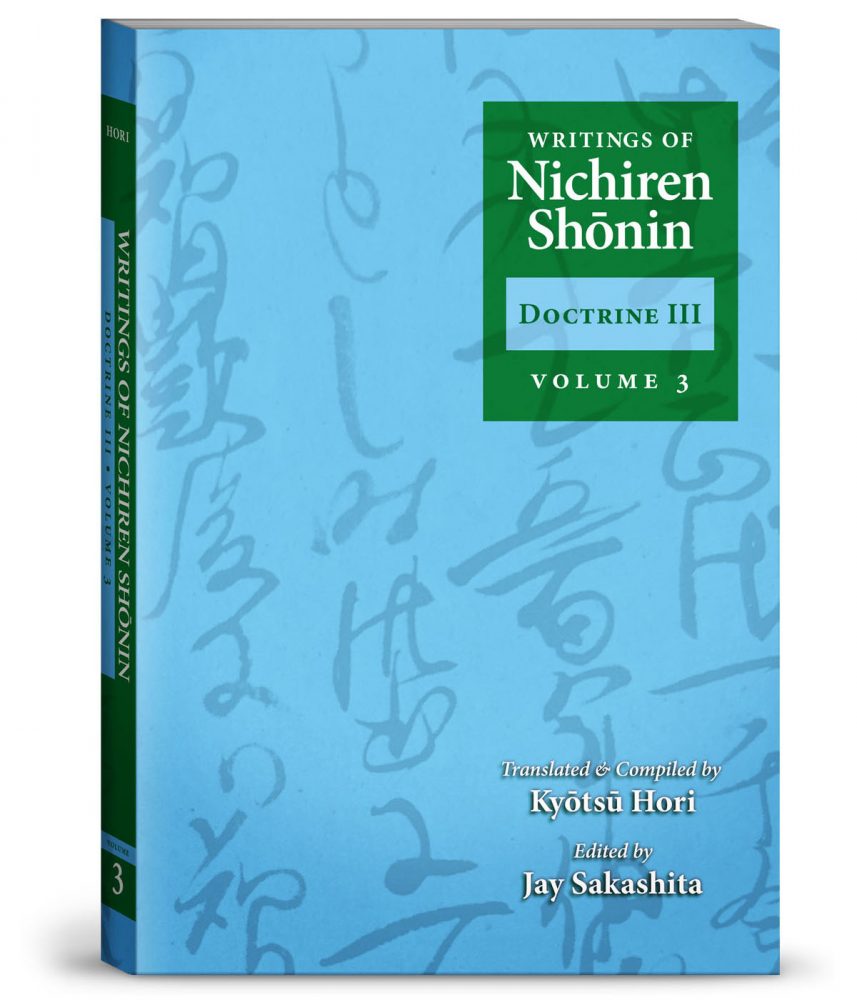April 1, 2022
Writings of Nichiren Shonin Volume 3, New Second Edition

Notice: Writings of Nichiren Shonin Volume 3, 2nd Edition is available on Amazon.
By Rev. Shinkyo Warner
As part of the update of the Writings of Nichiren Shonin (WONS) series, volume three was released on April 1st of this year. This volume includes the last of Nichiren’s five major writings after the other four were included in the first two volumes. The Hoon-jo, Essay on Gratitude (ST 223), was written from Nichiren’s hermitage on Mount Minobu in 1276, the second year of Kenji, in the month after receiving news of the death of his master, Dozen-bo. Unable to leave his hermitage, he sent his disciple Niko to read the essay at his late master’s tomb and before the other monks at Seichoji Temple.
This volume also includes what is sometimes called Nichiren’s “sixth major writing”: Soya Nyudo-dono-gari Gosho, A Letter to Lay Priest Soya (ST 170). This expands on another writing contained in this volume, Kyoki Jikoku-sho, Treatise on the Teaching, Capacity, Time and Country (ST 29), in which Nichiren lays out the five principles for propagation. It also describes the Lotus Sutra as precious medicine for saving the people living in the Latter Age of Degeneration.
One of the more colorful works in this volume is the Ken Hobo-sho, A Clarification of Slandering the True Dharma (ST31) in which Nichiren describes the conditions of the eight major hells and what people do to find themselves in these horrifying places. Then after describing how the worst of these hells is the destination for those who commit the worst transgression of slandering the Lotus Sutra, he argues that there is only one way to Buddhahood. That is, forms of Buddhism other than the practice of the Wonderful Dharma of the Lotus Sutra, not to mention non-Buddhist practices, will only leave people trapped in cycles of suffering.
This ties in with the overviews he provides in Ichidai Shogyo Tai-i, Outline of All the Holy Teachings of the Buddha (ST 10), Shoshu Mondo-sho, Questions and Answers on Other Schools (ST 5), and Ichidai Goji Keizu, Genealogical Chart of the Buddha’s Lifetime Teachings in Five Periods (ST 20). Following T’ien-t’ai’s assertion that it is necessary to comprehend the superior position of the Lotus Sutra relative to the Buddha’s other teachings, Nichiren gives us an overview of those other teachings with details of how each of them falls short of the Wonderful Dharma of the Lotus Sutra that leads all beings to the Buddha’s wisdom.
We can see in all these writings how Nichiren was not merely working to add to his followers’ understanding. He is preparing us to engage with people who may not have heard of the Wonderful Dharma, and who may reject it once they hear it. As the leader of us, the Bodhisattvas who emerged from underground, he is awakening our capacities to bring the benefit of the Buddha’s Wisdom to a world suffering and badly needing it.